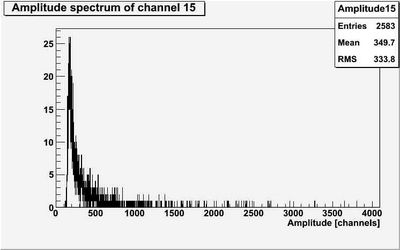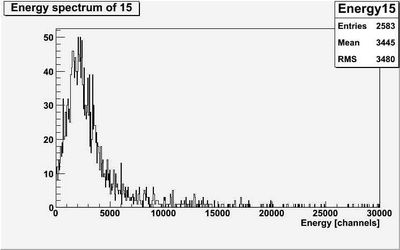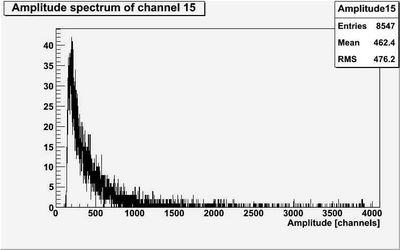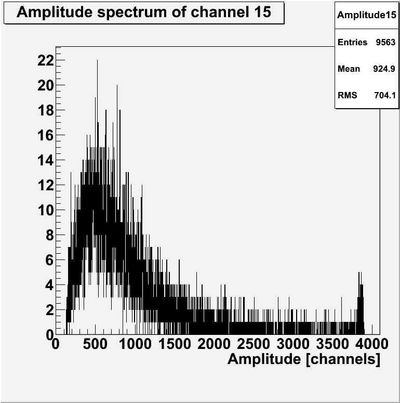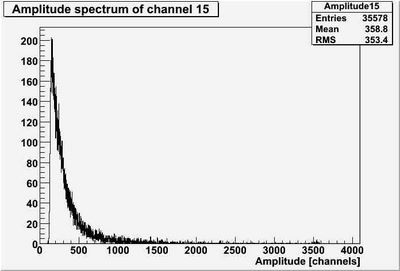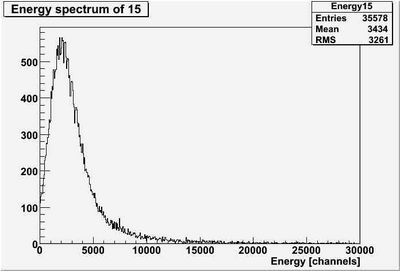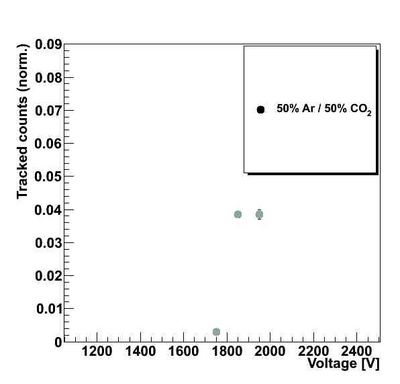Preamp 4: Quick look at cosmic data with reduced fADC range
From GlueXWiki
- The cosmic data below were obtained with the input range of the fADCs reduced.
- The fADCs now accept signals from 50mV to 600 mV (approximately) - this is half of the previous range. We adjusted the shaper output correspondingly, to put the lowest baseline voltage at around 80 mV (it varies from straw to straw).
- Each run was for around 20 hours or less.
- The following show untracked data (hits in multiple straws are not required) so that they can be compared to the earlier spectra (remembering that the fADC range is now half of that used previously):
1750V (19.5h) amplitude (left) and energy (right)
1850V (24h) amplitude (left) and energy (right)
1950V (18h?) amplitude (left) and energy (right)
And with the original preamp and ADC range for comparison:
1950V - amplitude (left) and energy (right)
- Finally, a low statistics efficiency plot obtained with these new data (new preamp, new fADC range) for channel 7, which had the largest number of tracks going through it:
This looks very promising but it would be nice to do it with more statistics and data points...
